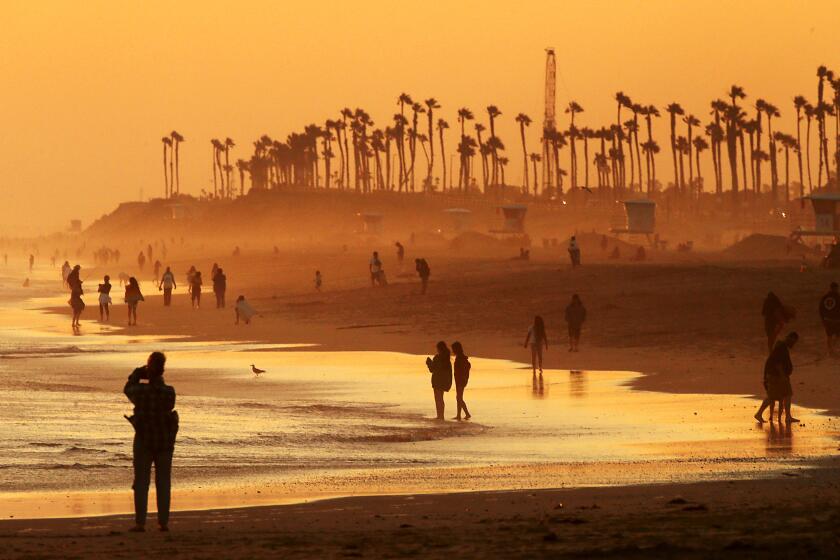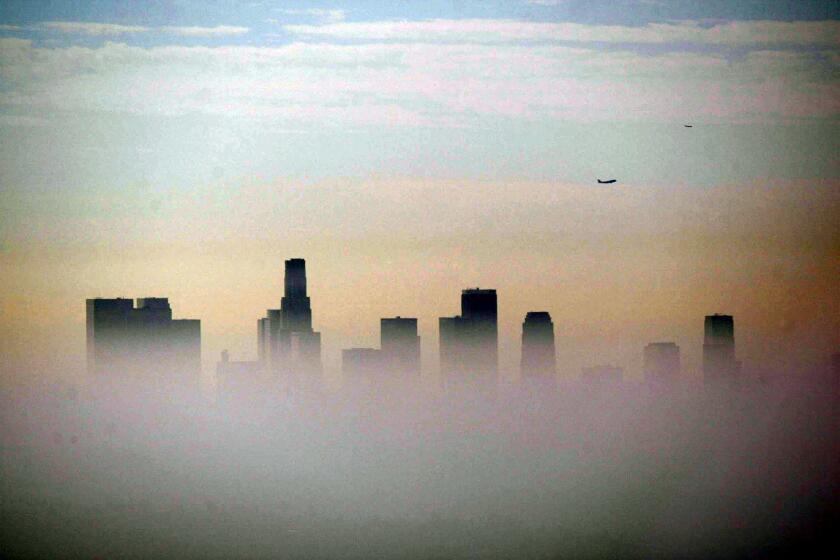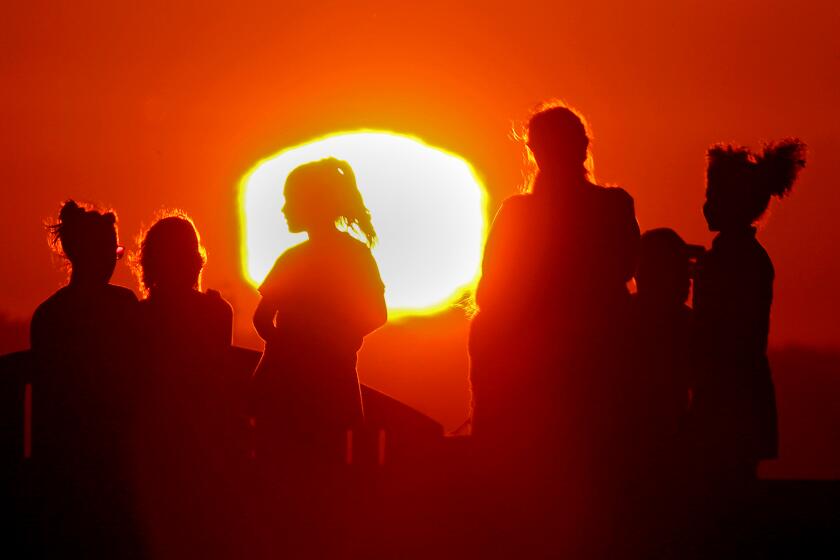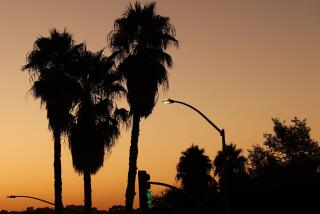How hot will it get in Southern California this weekend? What you need to know

- Share via
A heat wave has descended on Southern California.
Although the region has seen worse, this one could bring dangerous, record-setting temperatures to inland and desert areas.
Here’s what to expect:
Weekend
An excessive-heat warning for the Antelope Valley and foothills will be in effect from 10 a.m. Friday to 10 a.m. Monday, with temperatures ranging from 103 to 113 degrees, according to the National Weather Service. Overnight lows could provide little relief, dipping only into the mid-70s to mid-80s.
Temperatures are forecast to peak Friday into Monday in the deserts, lower mountains and interior valleys. Overnight lows are expected from the low 70s into the 80s in the lower mountains.
For the coastal valleys and Santa Monica Mountains, the heat is expected to peak Friday through Sunday, with highs in the 90s to 105.
The warmest areas will be in the valleys, the San Fernando Valley foothills and the Los Angeles County mountains. Woodland Hills could see a high of 107 degrees Saturday.
A days-long heat wave is expected to continue across Southern California through the weekend, bringing high temperatures into the triple digits and elevating wildfire danger.
Next week
Forecasts show the heat is expected to gradually decrease starting Monday, though another heat wave could arrive by next weekend.
Hot spot
All eyes will be on Death Valley, where thermometers could reach 130 degrees, with overnight lows exceeding 100. Death Valley should have highs of 128 and 129 degrees Saturday and Sunday, respectively.
The conditions
The “intense” heat is caused by an area of high pressure over Southern California that began Wednesday, leading to a warm air mass known as a “heat dome” that traps the heat near the surface. The air mass is not expected to mix with other areas, resulting in the air being still and keeping the region warm.
The high pressure is expected to compress the marine layer, keeping it concentrated mostly to coastal areas and away from more inland regions, which will be much hotter.
Around 38.5 million California residents live in a county that received a failing grade in the Lung Assn.’s annual “State of the Air” report.
Air quality
The South Coast Air Quality Management District issued a smog/ozone alert for inland areas:
- Air quality will likely reach the unhealthy or higher level in inland areas of the South Coast basin and in the Coachella Valley on Friday though Tuesday.
- Ozone levels may reach very unhealthy levels in the Lake Arrowhead area, the San Bernardino Valley and nearby areas.
California’s first heat wave of the year could last into next week. Here are some tips on how to stay safe and cool during hot weather.
Heat safety tips
Stay informed
You can monitor your area’s forecast by going to the National Weather Service’s website and searching by city, state or ZIP Code for the latest weather updates and alerts. Follow local officials and agencies on social media for tips and information on available resources in your area. Keep an extreme heat checklist to make sure you are prepared.
Stay indoors and dress in light clothing
Weather experts and public health offices advise people to stay indoors as much as possible, particularly between 10 a.m. and 3 p.m. when the sun is strongest. If you exercise outdoors, it’s recommended you do so early in the morning or later in the evening. If you don’t have air conditioning, the Centers for Disease Control and Prevention recommends going to a mall or public library. You also can refer to your county’s website or call the local health department to learn about cooling centers in your area.
Watch out for heat-related illnesses
According to the CDC, heat-related illnesses can range from heat rashes and sunburns to more serious conditions, including heat exhaustion and heat stroke, and result from the body’s inability to cool down by sweating.
Signs of heat stroke — the most serious of heat-related illnesses — include a temperature of 103 degrees or higher; hot, red, dry, or damp skin; fast, strong pulse; headache; dizziness; nausea; confusion and losing consciousness. If you’re experiencing these symptoms, seek immediate medical attention. The CDC advises against drinking anything and recommends moving to a cool place and into a cold bath or using a cold cloth.
Signs of heat exhaustion are heavy sweating; cold, pale and clammy skin; a fast, weak pulse; nausea or vomiting; muscle cramps; fatigue; dizziness; headaches; and fainting. If you’re showing these symptoms, get out of the sun immediately, seek a cool place or cool towels and sip water. Monitor your symptoms and get help if you are vomiting, the symptoms worsen, or they last longer than an hour.
Stay hydrated
Drinking plenty of fluids, particularly before going outdoors, is critical in preventing heat-related illnesses. Officials at UCLA warn against waiting until you’re thirsty to drink. During times of extreme heat, it’s best to drink at least two to four cups of water per hour.
More to Read
Sign up for Essential California
The most important California stories and recommendations in your inbox every morning.
You may occasionally receive promotional content from the Los Angeles Times.















